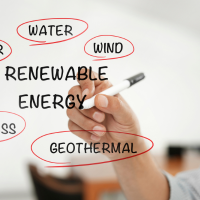The International Union for Conservation of Nature (IUCN) was established in 1948, making it one of the oldest and most influential environmental organizations in the world. Founded in Fontainebleau, France, the IUCN emerged from a growing recognition of the need to protect natural resources and biodiversity in the aftermath of World War
The mission of the IUCN is not only to protect the environment but also to promote sustainable development. This dual focus is reflected in its work across various sectors, including biodiversity conservation, climate change adaptation, and sustainable resource management. The IUCN operates through a unique membership structure that includes government agencies, non-governmental organizations (NGOs), scientists, and local communities.
This diverse membership allows the IUCN to draw on a wealth of knowledge and expertise, enabling it to address complex environmental challenges effectively. The organization’s commitment to science-based decision-making and its emphasis on collaboration have made it a trusted partner in global conservation efforts.
The Role of the IUCN in Global Conservation Efforts
The IUCN plays a pivotal role in shaping global conservation policies and practices. One of its most significant contributions is the development of the IUCN Red List of Threatened Species, which serves as a comprehensive inventory of the global conservation status of plant and animal species. This list not only raises awareness about biodiversity loss but also provides critical data that informs conservation strategies and policy decisions worldwide.
By categorizing species based on their risk of extinction, the IUCN helps prioritize conservation efforts and allocate resources where they are most needed. In addition to the Red List, the IUCN is instrumental in facilitating international agreements and conventions aimed at protecting biodiversity. The organization has been a key player in major global initiatives such as the Convention on Biological Diversity (CBD) and the Ramsar Convention on Wetlands.
Through these platforms, the IUCN fosters dialogue among governments, NGOs, and local communities, promoting collaborative approaches to conservation. Furthermore, the IUCN’s World Conservation Congress, held every four years, serves as a global forum for discussing pressing environmental issues and formulating actionable solutions. This congress brings together thousands of stakeholders from around the world, highlighting the importance of collective action in addressing conservation challenges.
Challenges and Opportunities for the IUCN in the Future
As the IUCN looks to the future, it faces a myriad of challenges that threaten its mission and the broader goals of global conservation. One significant challenge is the rapid pace of climate change, which exacerbates existing threats to biodiversity and ecosystems. Rising temperatures, shifting weather patterns, and increasing frequency of extreme weather events pose serious risks to wildlife habitats and species survival.
The IUCN must adapt its strategies to address these evolving threats while continuing to advocate for policies that mitigate climate change impacts. However, with these challenges come opportunities for innovation and growth. The increasing global awareness of environmental issues has led to a surge in public interest and support for conservation initiatives.
This heightened awareness presents an opportunity for the IUCN to engage new audiences and mobilize resources for its programs. Additionally, advancements in technology offer new tools for monitoring biodiversity and assessing ecosystem health. By leveraging data analytics, remote sensing, and citizen science initiatives, the IUCN can enhance its capacity to respond to conservation challenges effectively.
The Importance of Collaboration and Partnerships in Conservation
Collaboration is at the heart of successful conservation efforts, and the IUCN exemplifies this principle through its diverse partnerships. The organization recognizes that no single entity can tackle complex environmental issues alone; therefore, it actively seeks collaborations with governments, NGOs, academic institutions, and local communities. These partnerships enable knowledge sharing, resource pooling, and coordinated action toward common conservation goals.
One notable example of successful collaboration is the IUCN’s work with indigenous communities around the world. By integrating traditional ecological knowledge with scientific research, the IUCN has developed innovative conservation strategies that respect cultural practices while promoting biodiversity preservation. This approach not only empowers local communities but also enhances the effectiveness of conservation initiatives by ensuring they are culturally relevant and context-specific.
Furthermore, partnerships with businesses can lead to sustainable practices that benefit both the environment and economic development. By engaging with corporate stakeholders, the IUCN can promote responsible resource management and encourage investment in conservation projects.
The Impact of Climate Change on Global Conservation Efforts
Climate change poses one of the most significant threats to global conservation efforts today. As temperatures rise and weather patterns become increasingly erratic, ecosystems are undergoing profound changes that affect species distribution and survival. For instance, coral reefs—often referred to as the “rainforests of the sea”—are experiencing widespread bleaching due to rising ocean temperatures.
This phenomenon not only threatens marine biodiversity but also jeopardizes the livelihoods of millions who depend on healthy oceans for food and income. The IUCN is actively addressing these challenges by advocating for climate-resilient conservation strategies. This includes promoting protected areas that are adaptable to changing climatic conditions and supporting ecosystem-based approaches that enhance resilience.
Additionally, the organization emphasizes the importance of integrating climate change considerations into national policies and development plans. By doing so, the IUCN aims to ensure that conservation efforts are not only effective in preserving biodiversity but also contribute to climate change mitigation and adaptation.
The Future of Global Conservation and the Role of the IUCN
Looking ahead, the future of global conservation will undoubtedly be shaped by ongoing environmental changes and societal shifts. The IUCN is poised to play a crucial role in this evolving landscape by continuing to advocate for science-based policies that prioritize biodiversity preservation. As more countries commit to international agreements aimed at combating climate change and protecting natural resources, the IUCN will be instrumental in guiding these efforts through its expertise and collaborative approach.
Moreover, as public awareness of environmental issues continues to grow, there is an increasing demand for transparency and accountability in conservation practices. The IUCN can leverage this momentum by promoting best practices among its members and partners while fostering a culture of shared responsibility for nature conservation. By engaging diverse stakeholders—from local communities to multinational corporations—the IUCN can catalyze collective action that drives meaningful change.
In conclusion, while challenges abound in the realm of global conservation, opportunities for innovation and collaboration also present themselves. The IUCN’s rich history, commitment to science-based decision-making, and emphasis on partnerships position it as a leader in addressing these challenges head-on. As we move forward into an uncertain future, the role of organizations like the IUCN will be more critical than ever in ensuring that our planet’s rich biodiversity is preserved for generations to come.








































